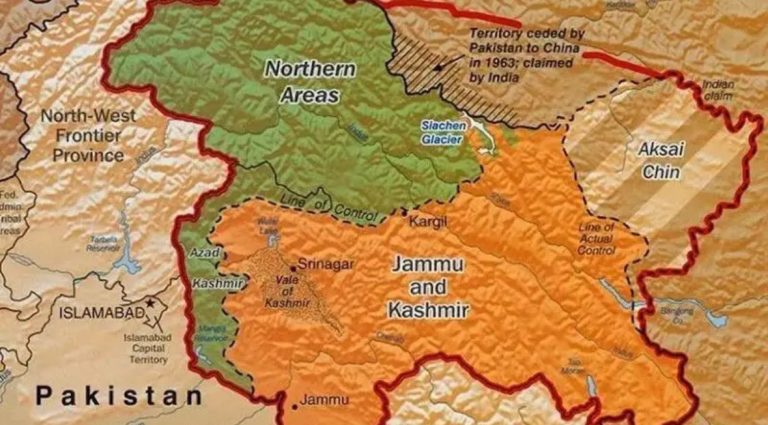Submitted by Sophia Paske
The Kashmir conflict has been a source of tension in South Asia for nearly 80 years. Before British India was partitioned in 1947, Viceroy Lord Mountbatten encouraged states to join either India or Pakistan. However, issues arose when Pakistan’s claim over the Muslim-majority state of Jammu and Kashmir was rejected by India, even though India accepted other Hindu-majority states. What made Kashmir’s case unique was that while the population was mostly Muslim, the region was ruled by a Hindu monarch. Eventually, Kashmir was divided, with one part administered by India and the other by Pakistan.
The conflict remains unresolved for several reasons. First, it is a key part of the broader rivalry between India and Pakistan, becoming deeply tied to the national identity of both countries. Over the years, three wars—fought in 1948, 1965, and 1999—failed to resolve the issue. Despite the time, resources, and political attention invested in it, no diplomatic solution has been achieved. Second, the voices of the Kashmiri people have often been overshadowed by the interests of the two nations, raising concerns about human rights. India’s decision to revoke Article 370 in 2019, which granted special status to Kashmir, has only added to the tension. This decision stripped Jammu and Kashmir of its autonomy over internal administration, including having its constitution and flag, sparking widespread controversy.
Stephen P. Cohen, a political scientist, argues that the Kashmir conflict is a “paired minority conflict,” meaning both India and Pakistan see themselves as threatened minorities, even if they are not numerically smaller. He explains that both states use specific strategies when they feel threatened, such as seeking allies, changing the balance of power, or trying to alter perceptions. In this context, Pakistan may attempt a quick military attack to gain control of Kashmir despite its weaker military, while India could plan a longer, more strategic war to assert its dominance. Cohen’s view is that both nations feel under attack from the other, which prevents a peaceful compromise.
Cohen also highlights the role of religion. Since Pakistan was created as a homeland for Muslims, many believe that Kashmir, with its Muslim-majority population, should belong to Pakistan. On the other hand, India fears that allowing Kashmir to secede would undermine its commitment to secularism. However, Cohen does not focus much on the Kashmiri people themselves, many of whom are tired of the violence and have distanced themselves from militant groups. While Cohen provides valuable insight into the political dynamics between India and Pakistan, he largely overlooks the impact on the local population.
In contrast, another political scientist, Sumantra Bose emphasises the internal dynamics within Kashmir. He argues that the conflict stems from the repeated denial of democratic rights to the people of Jammu and Kashmir. According to Bose, the Kashmiri people are the true victims, as they have the least control over their fate while being caught in the middle of a larger geopolitical struggle. After Article 370 was revoked, Kashmiris faced increasing corruption, undemocratic governance, and poverty, further alienating them from the rest of India.
Bose’s analysis shows how both India and Pakistan have used Kashmiris to further their agendas. In the late 1980s, Pakistan supplied weapons to Kashmiri militants, taking advantage of their opposition to Indian rule. In response, Indian security forces employed heavy-handed tactics, including illegal detentions and coercion. Both countries have exploited the region, with the Kashmiri people suffering the most. While Bose provides a compelling argument about the aspirations of the Kashmiri people, he does not give as much attention to the longstanding religious and political tensions between India and Pakistan that also drive the conflict.
By comparing Cohen and Bose, it becomes clear that both offer valuable perspectives. Cohen focuses on the geopolitical rivalry between India and Pakistan, while Bose highlights the struggles and frustrations of the Kashmiri people. Both perspectives are crucial for understanding the complexity of the Kashmir dispute.
In conclusion, Cohen’s work is helpful for those seeking a political analysis of the conflict. At the same time, Bose provides a human-centred view, emphasising the experiences and desires of the Kashmiri people. Together, these viewpoints help to explain why the Kashmir conflict has persisted for so long.

